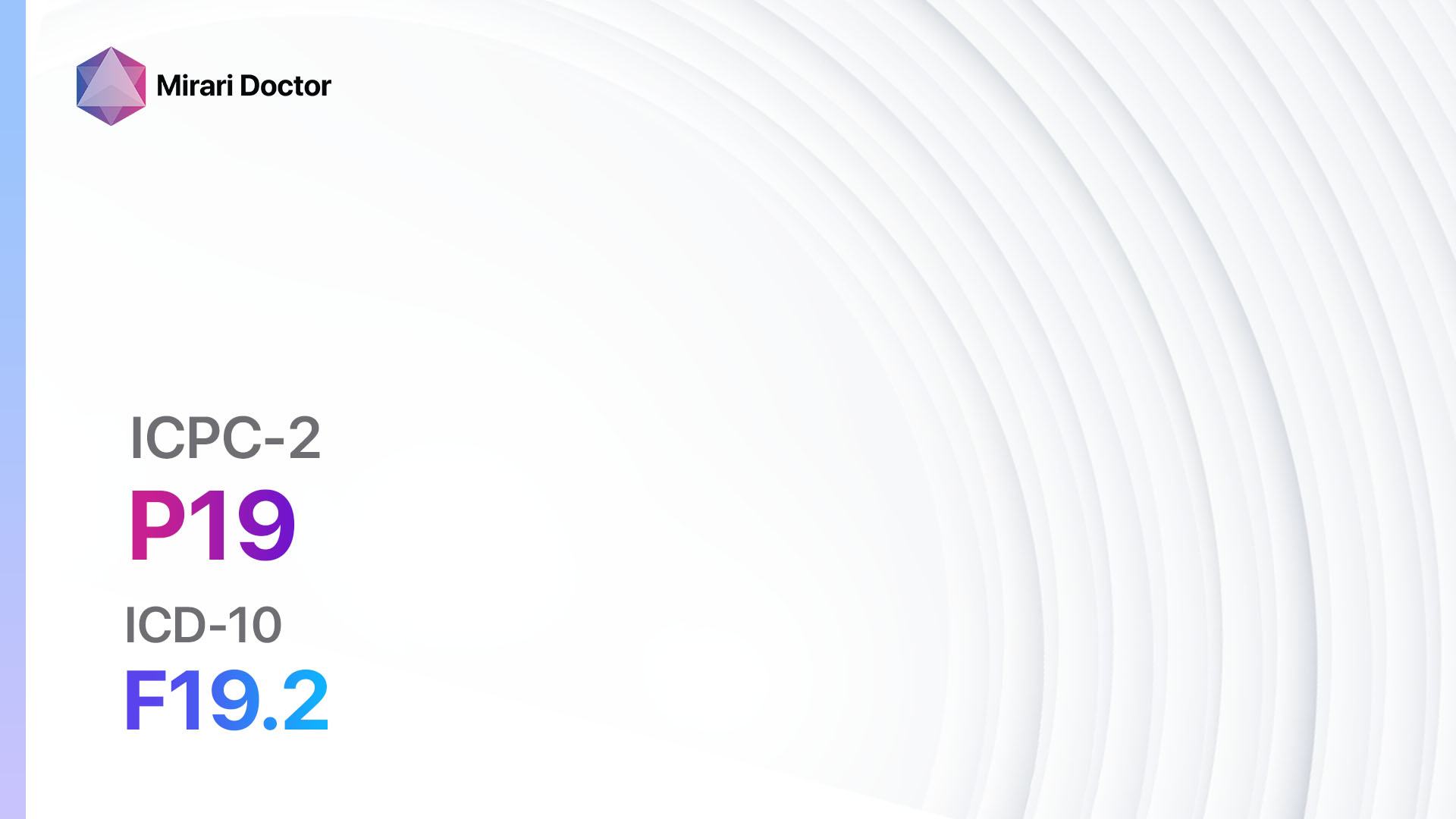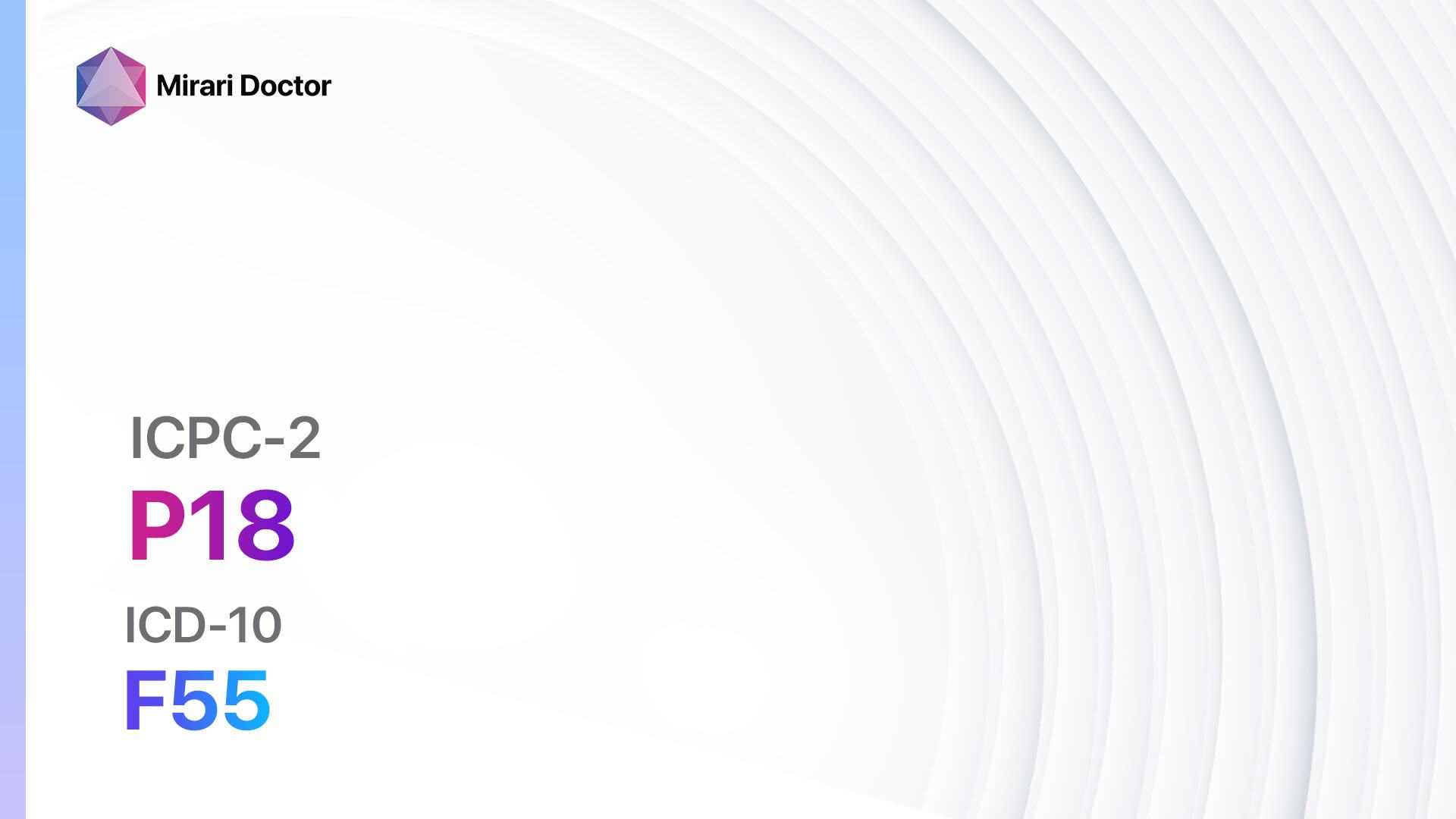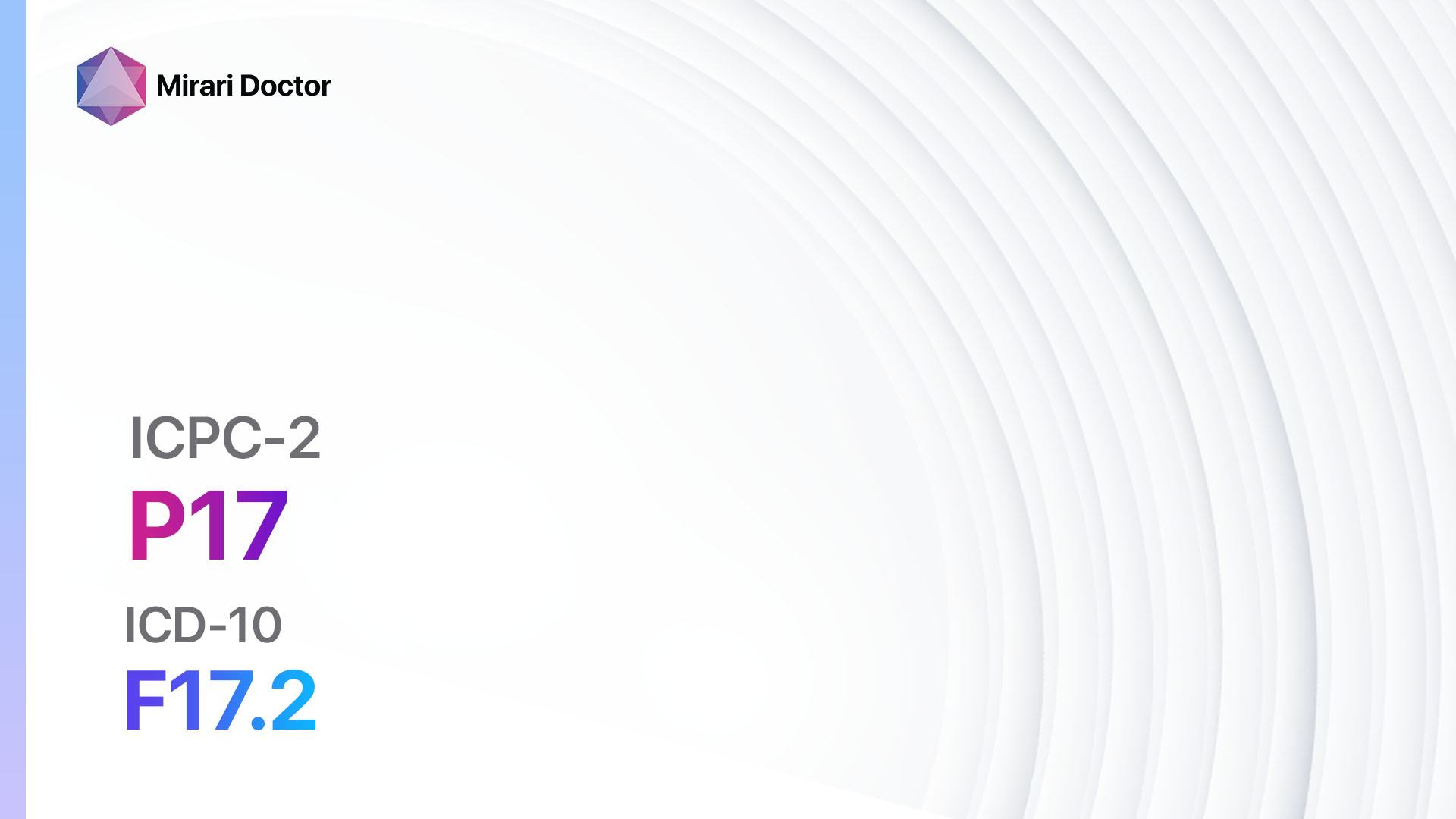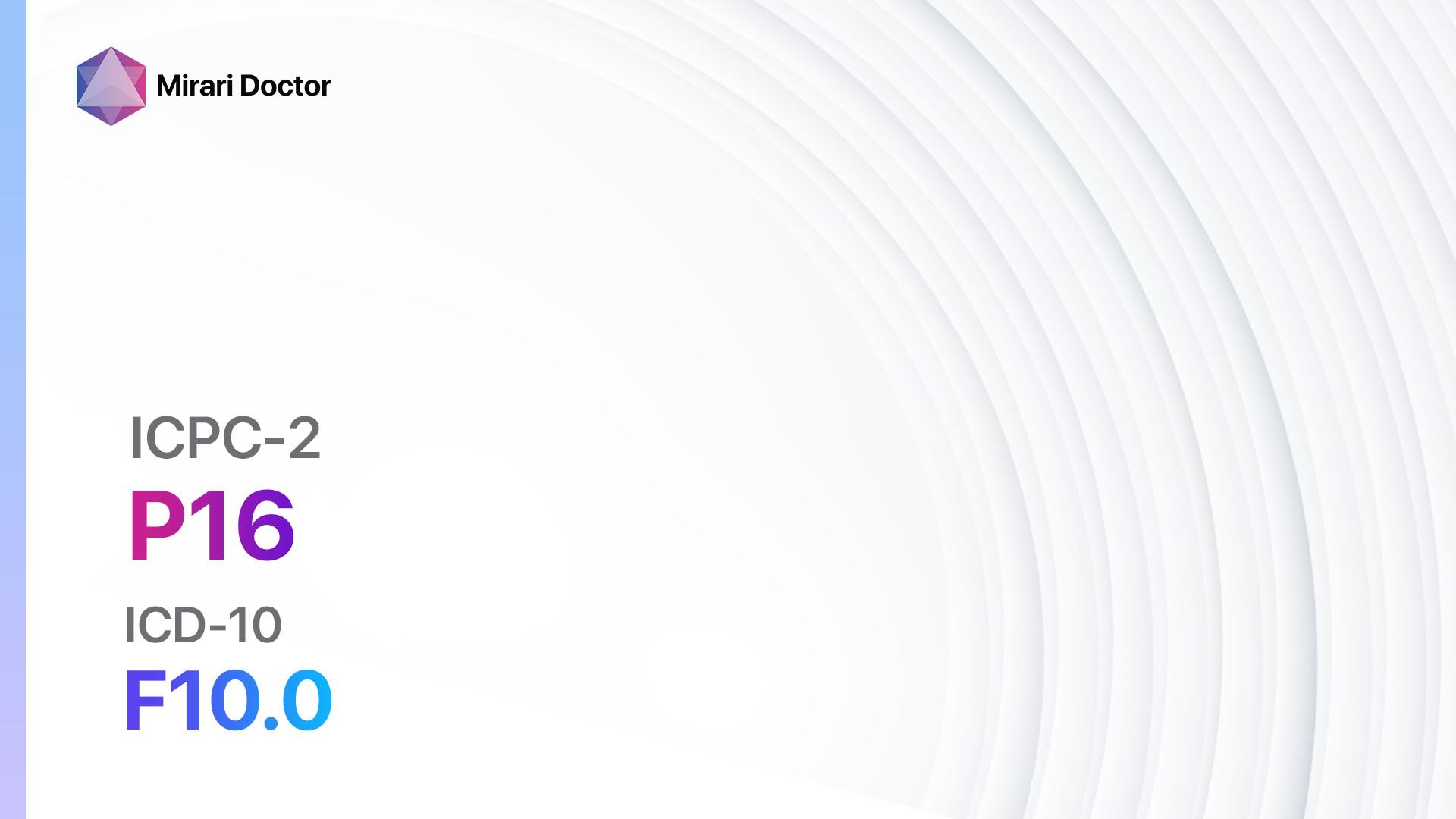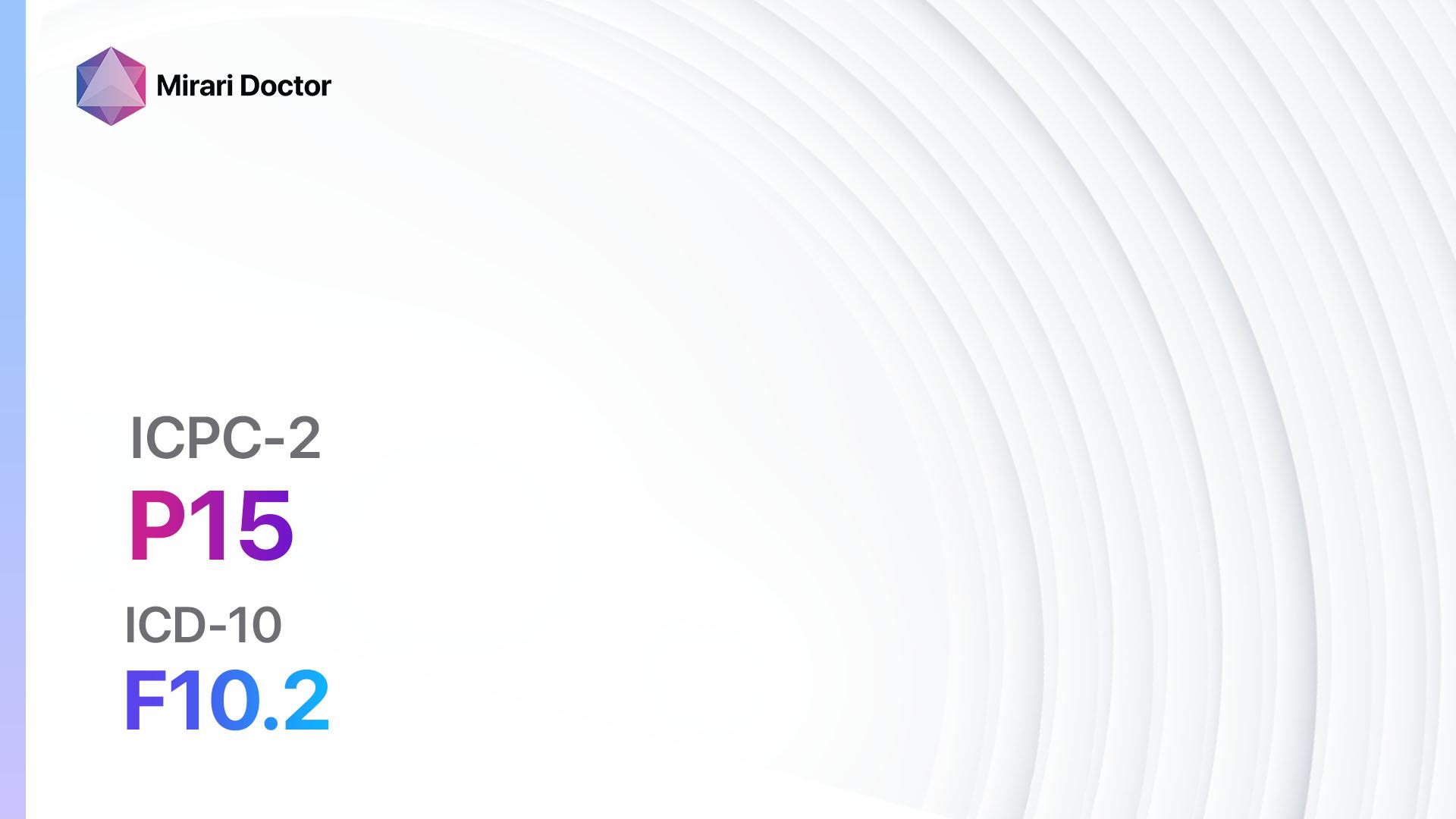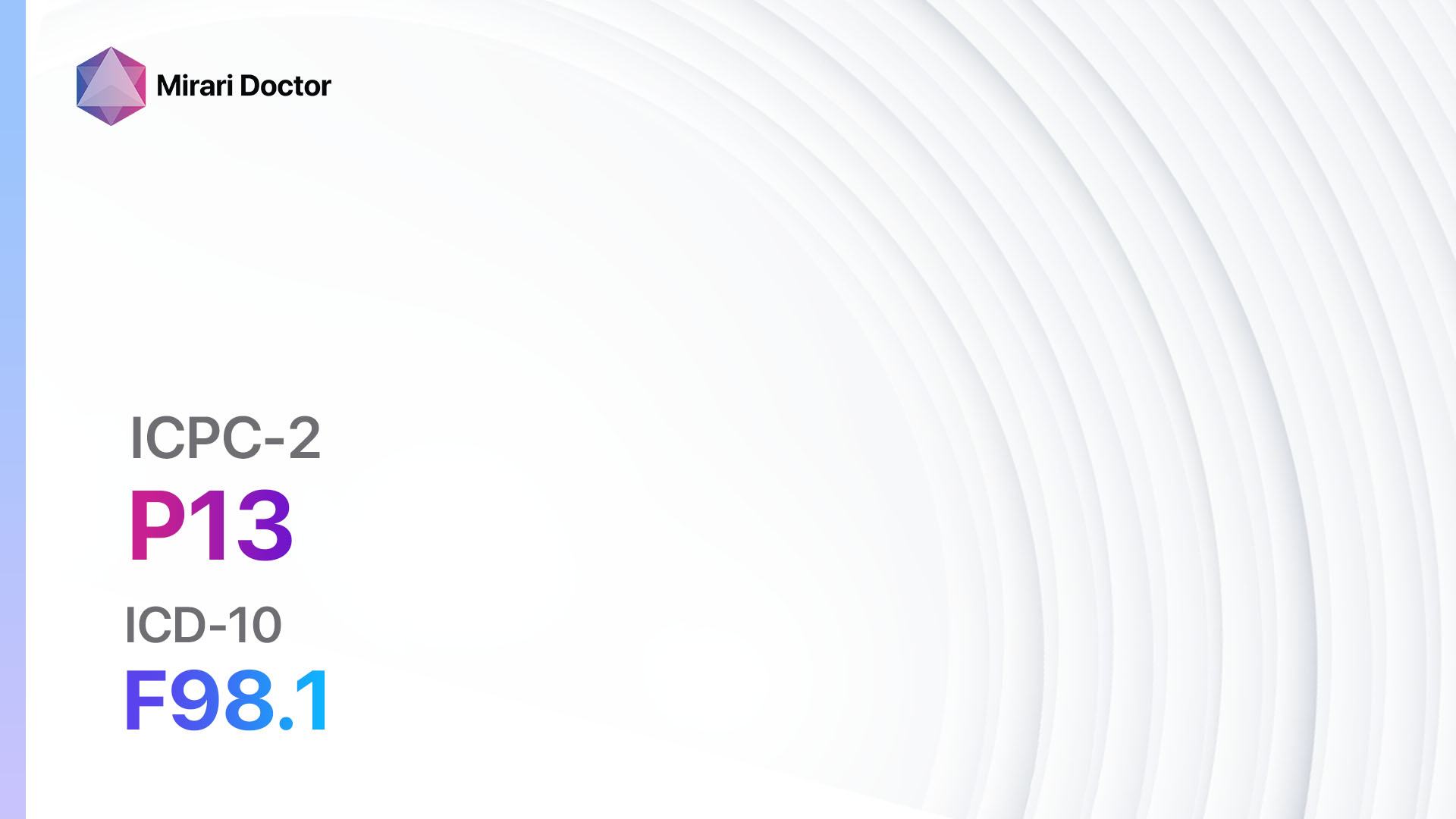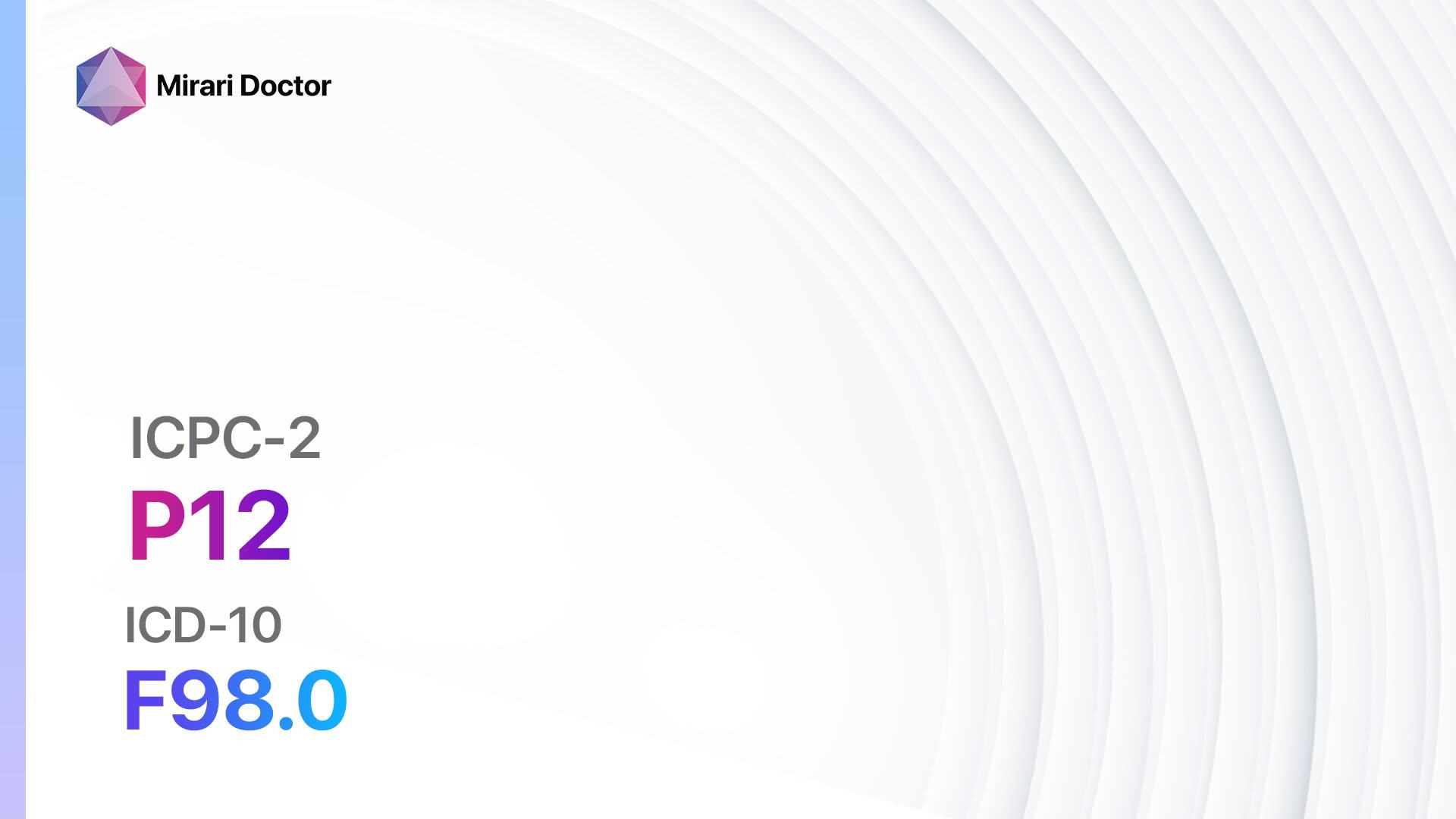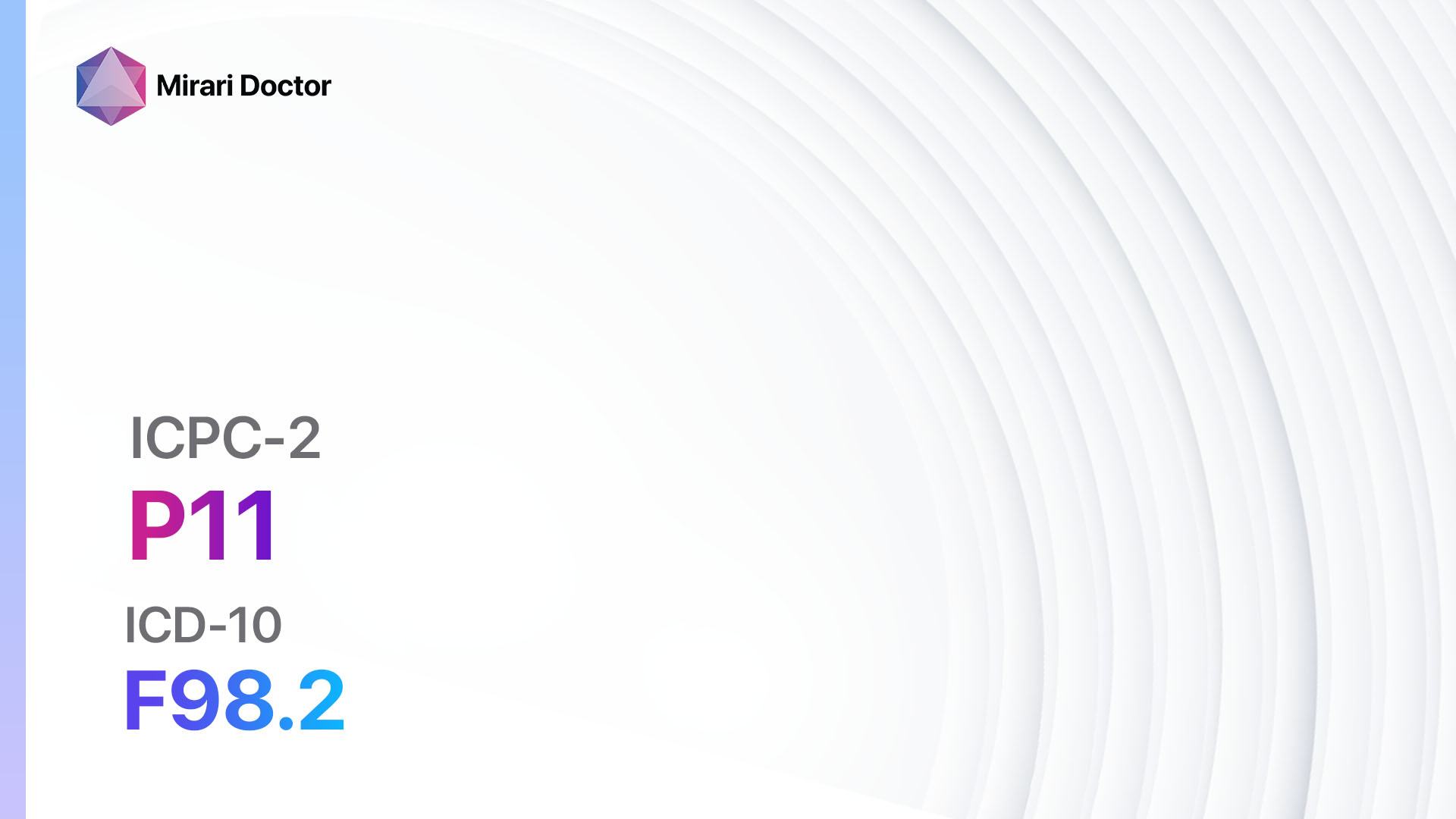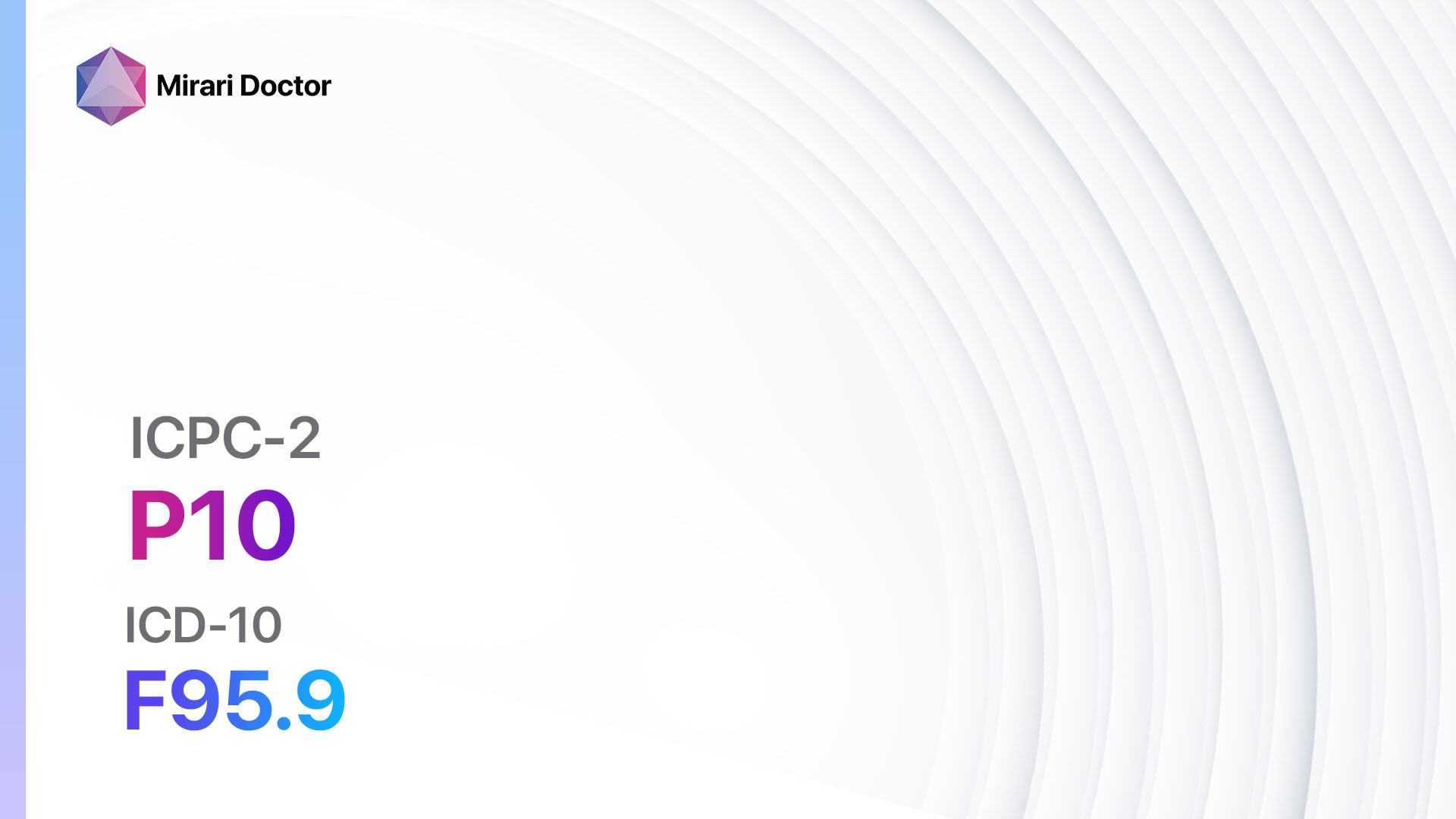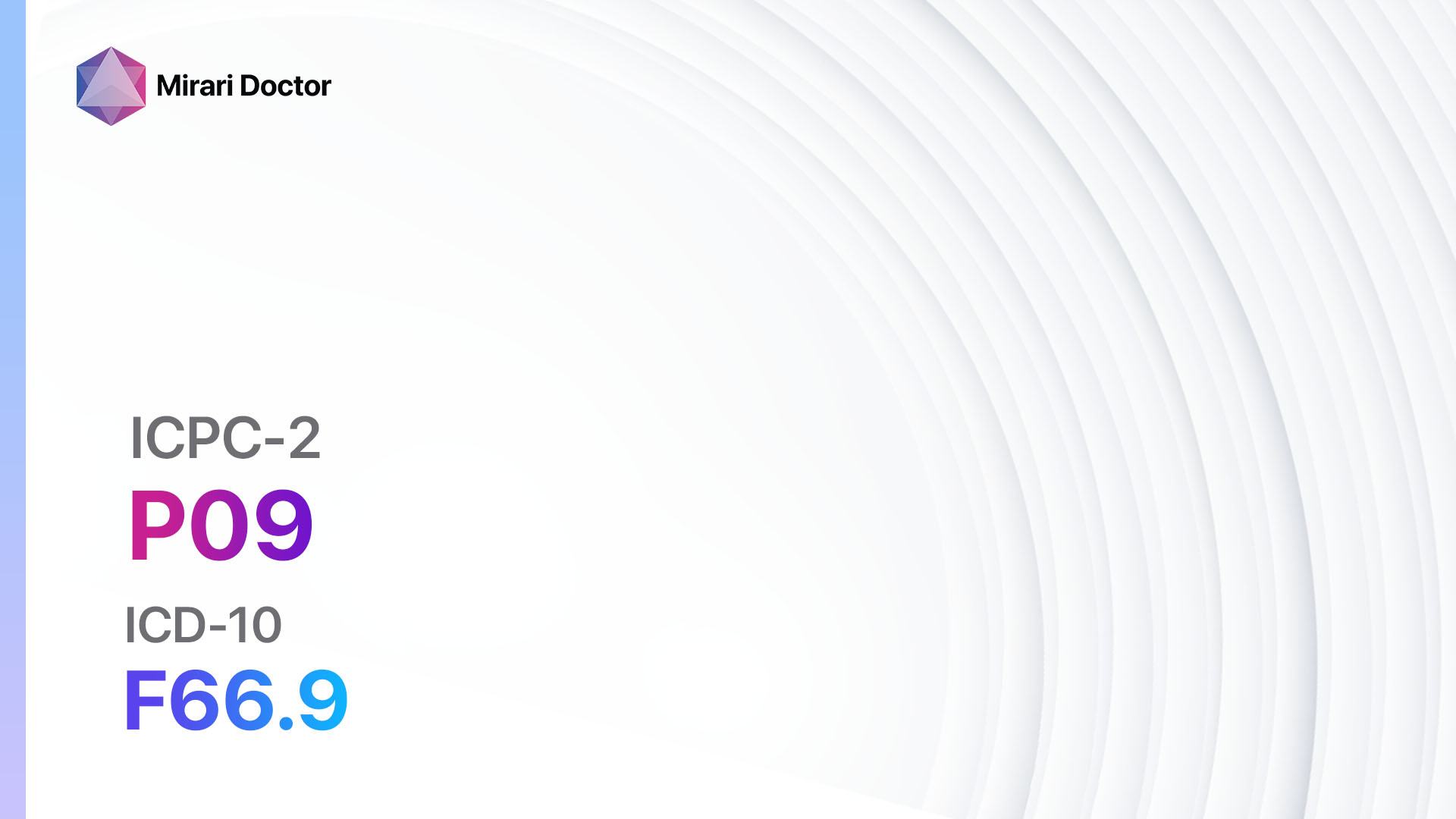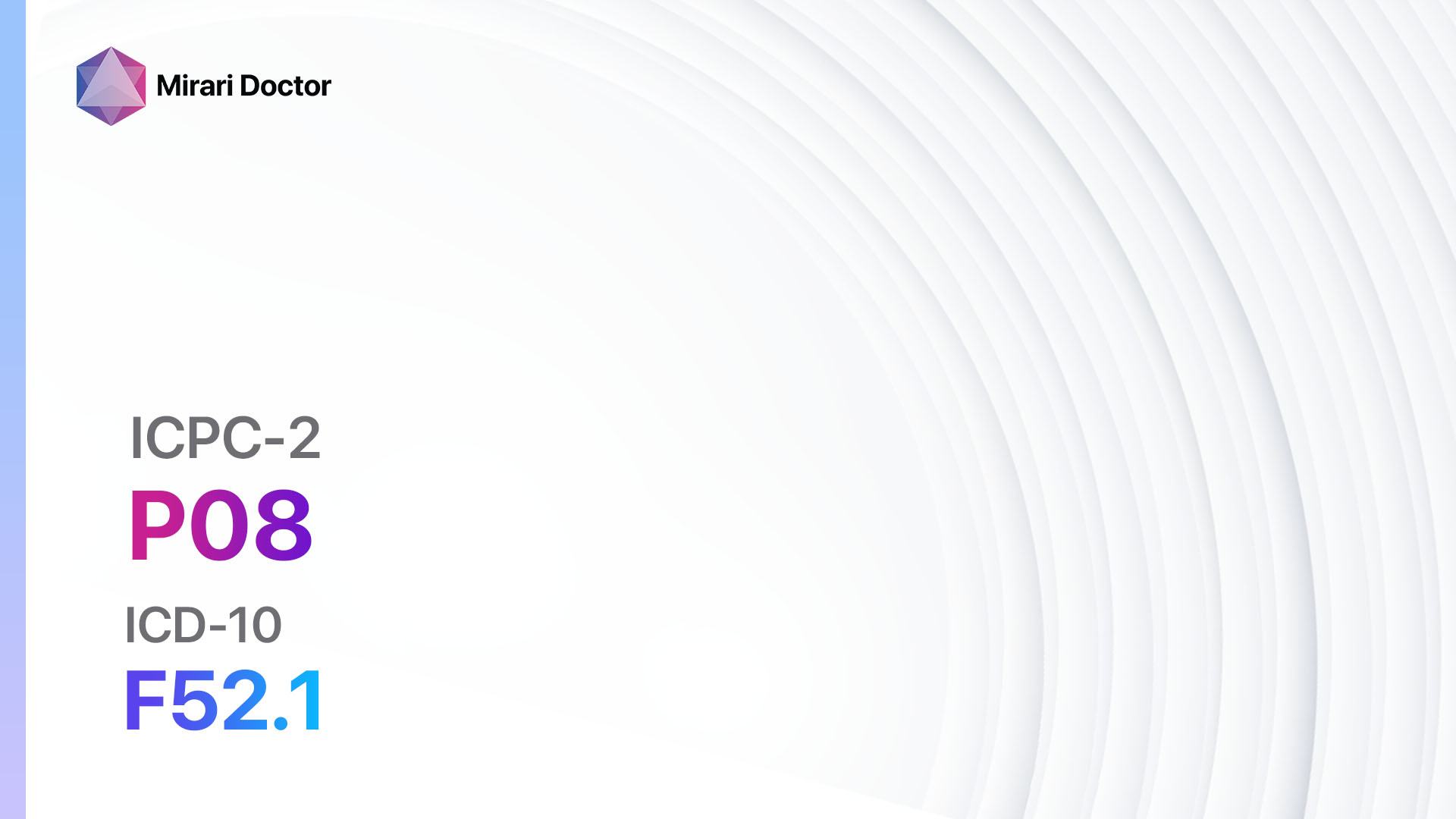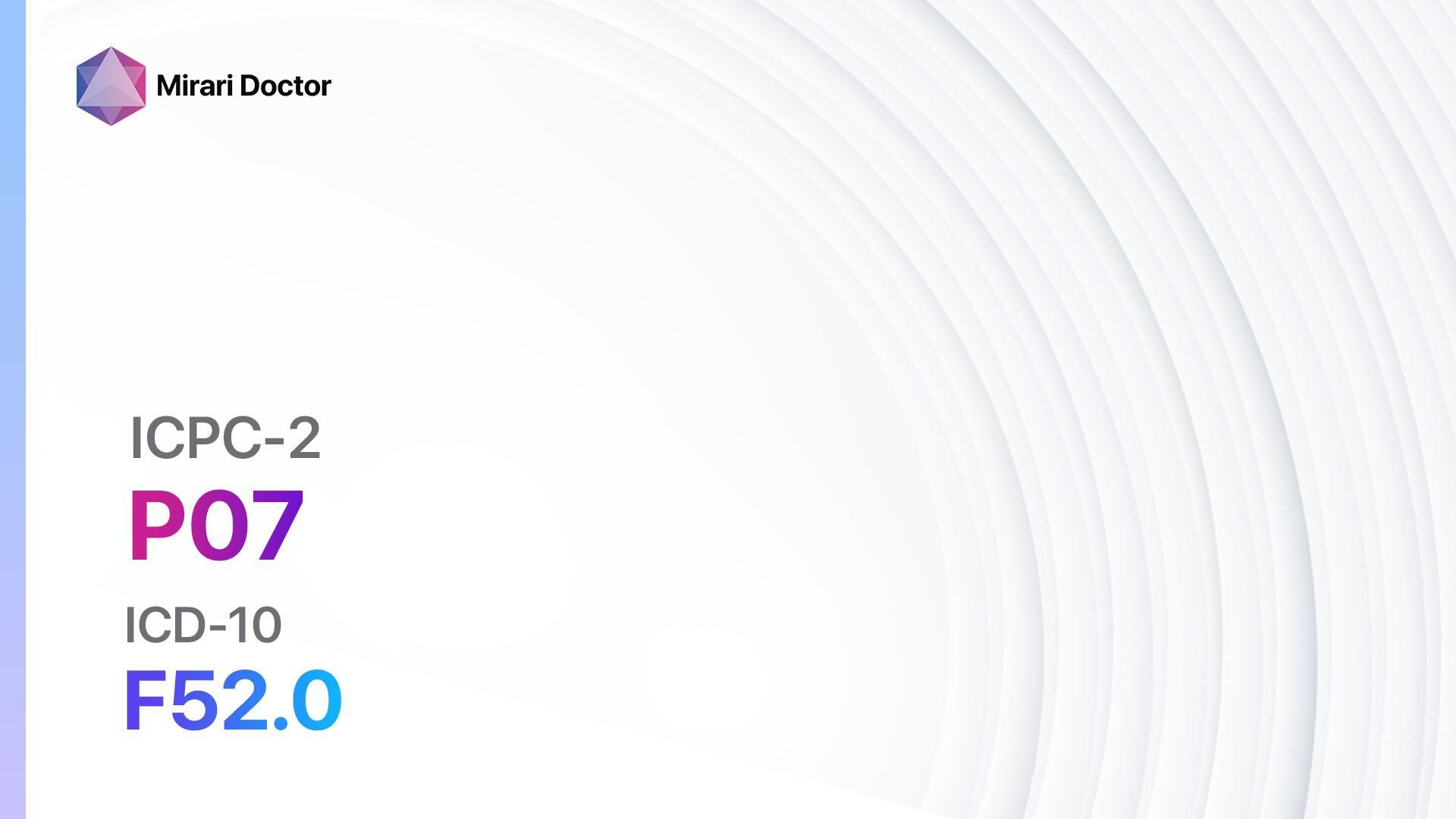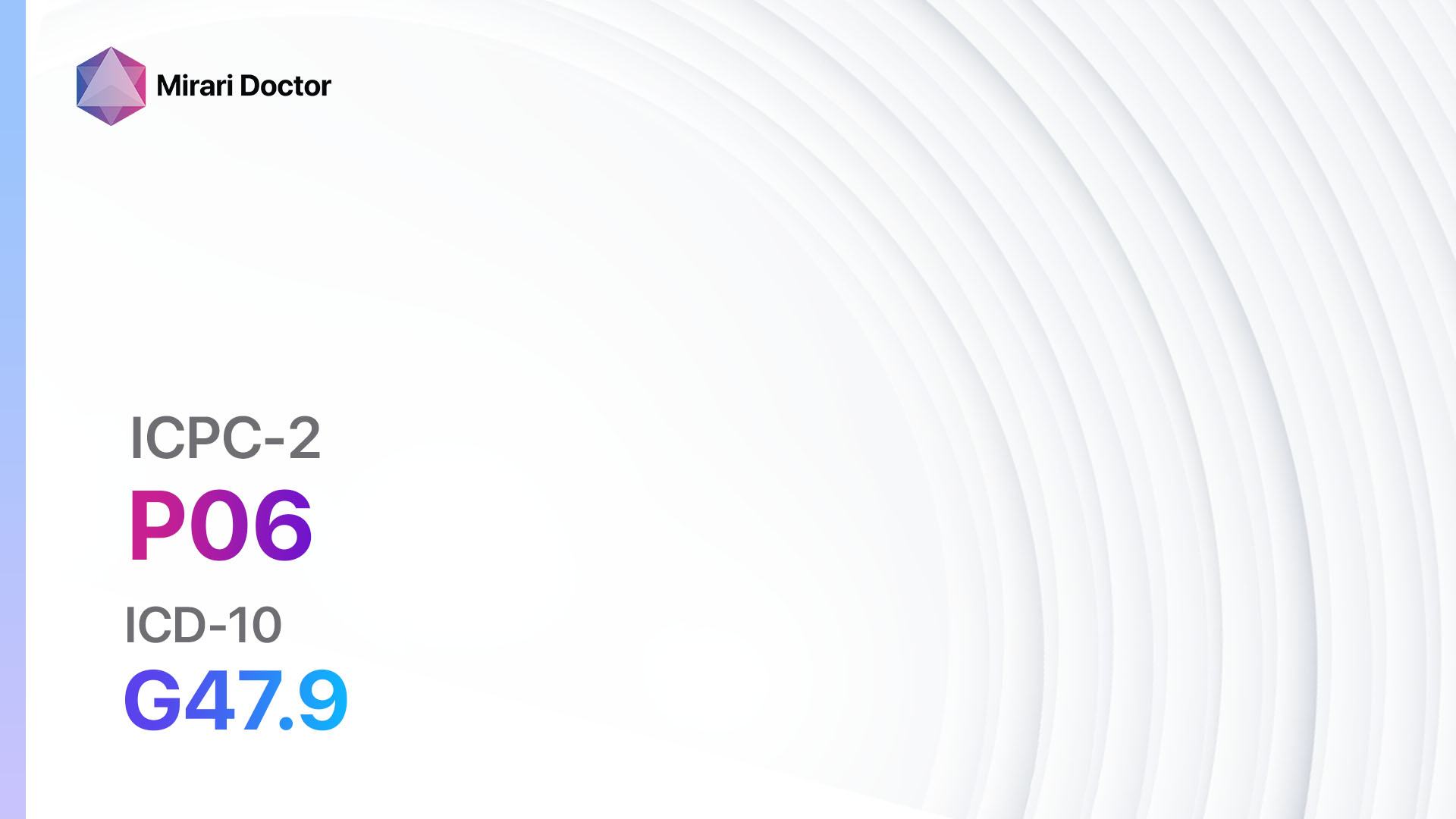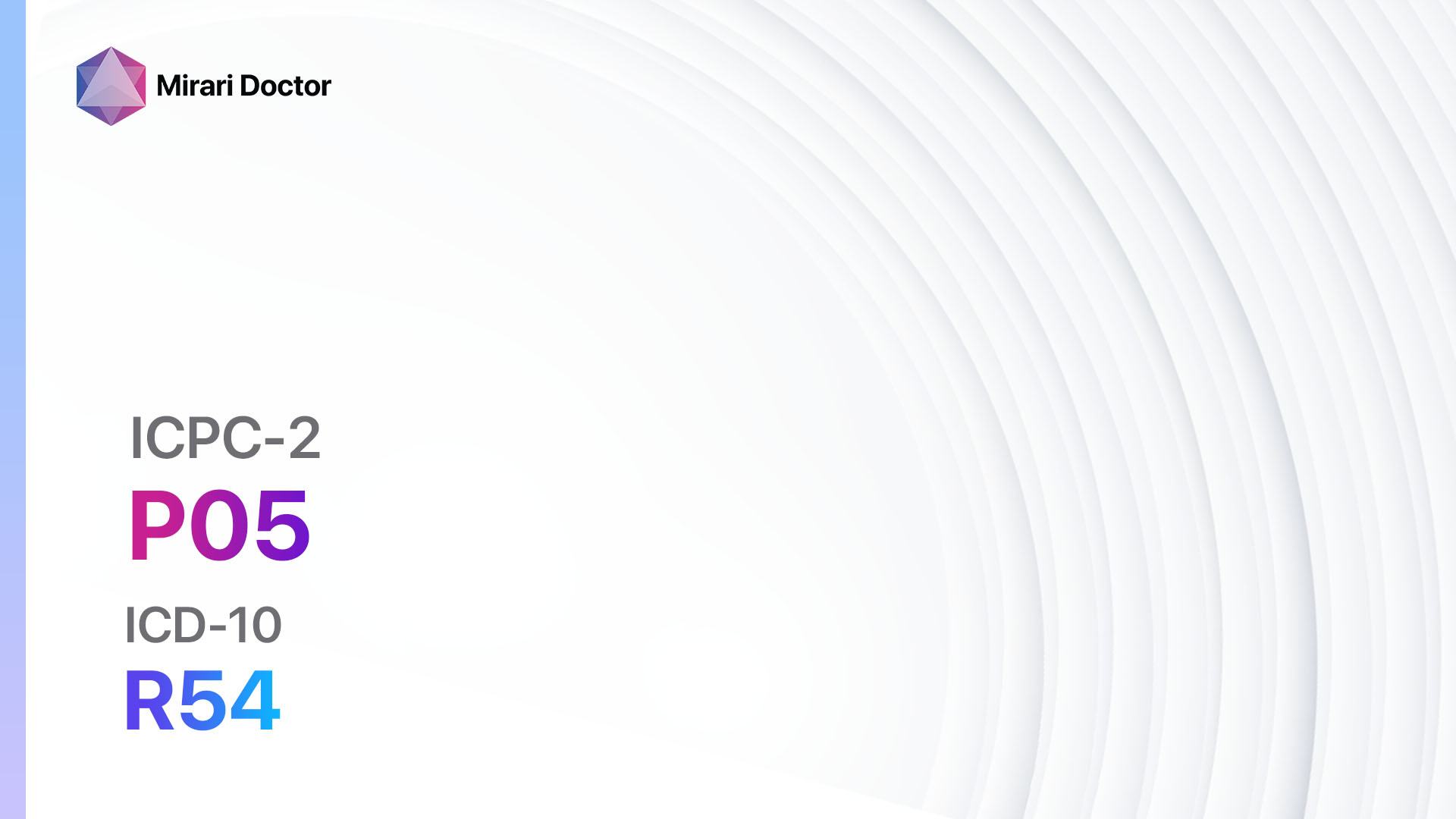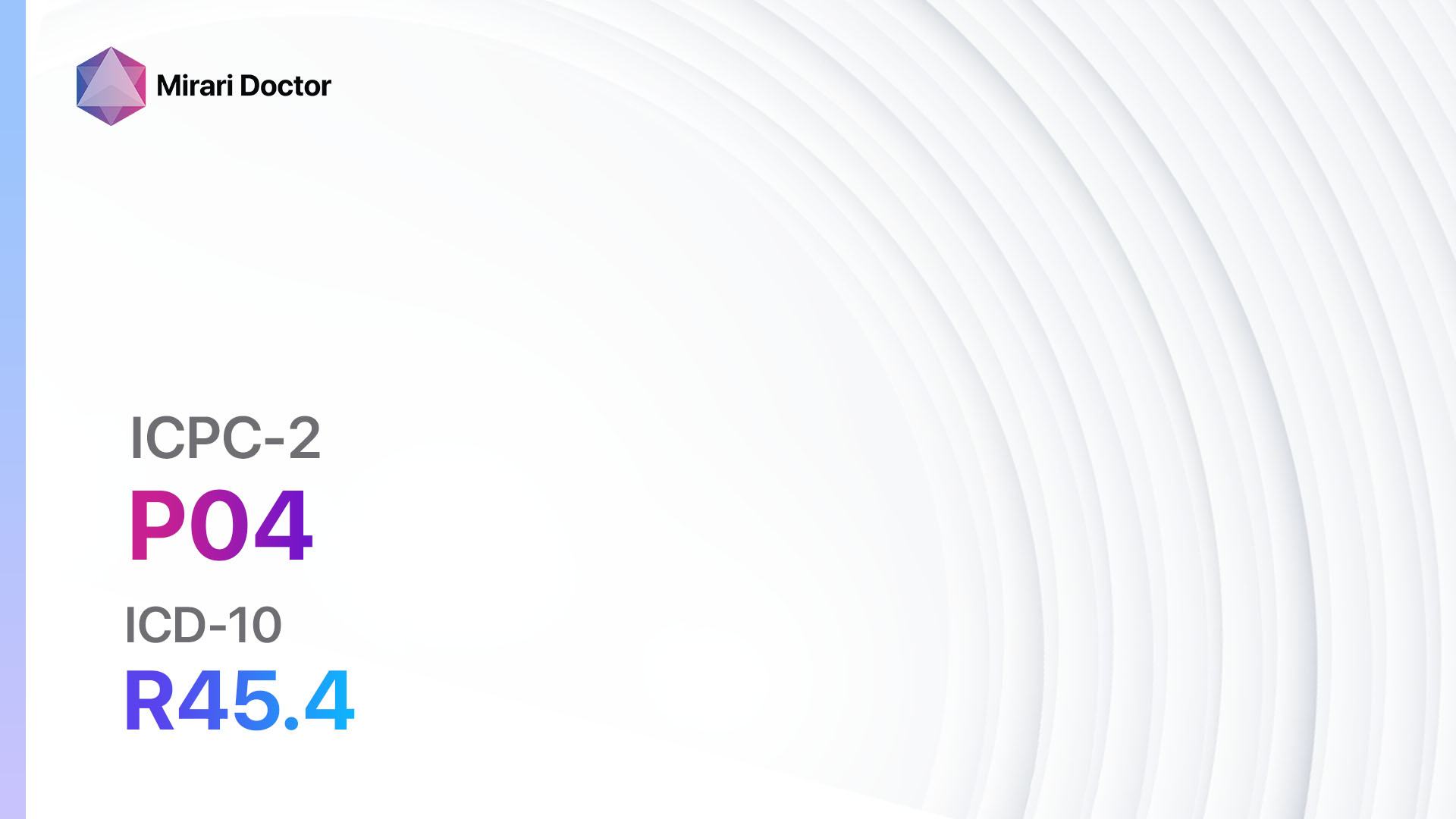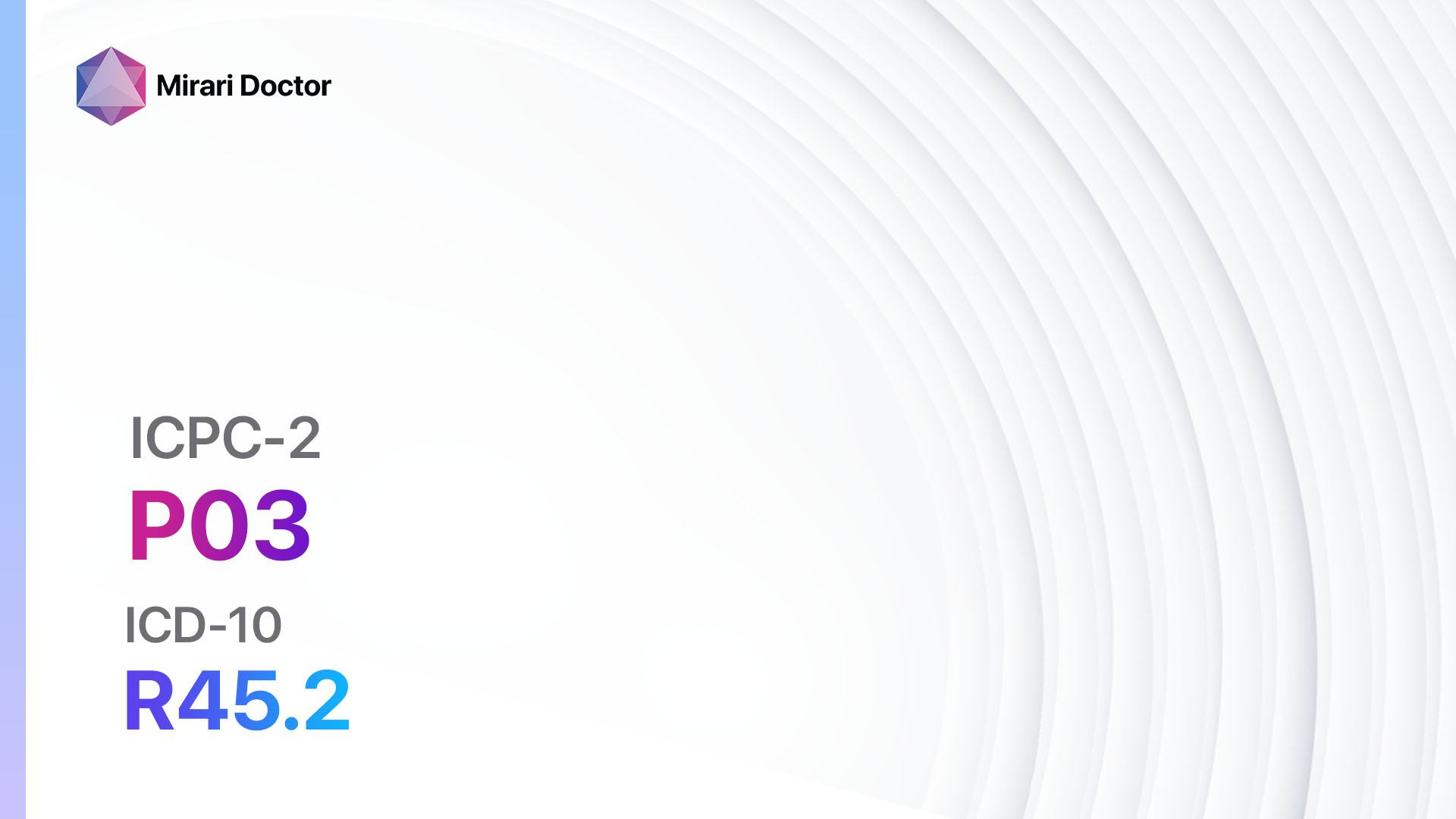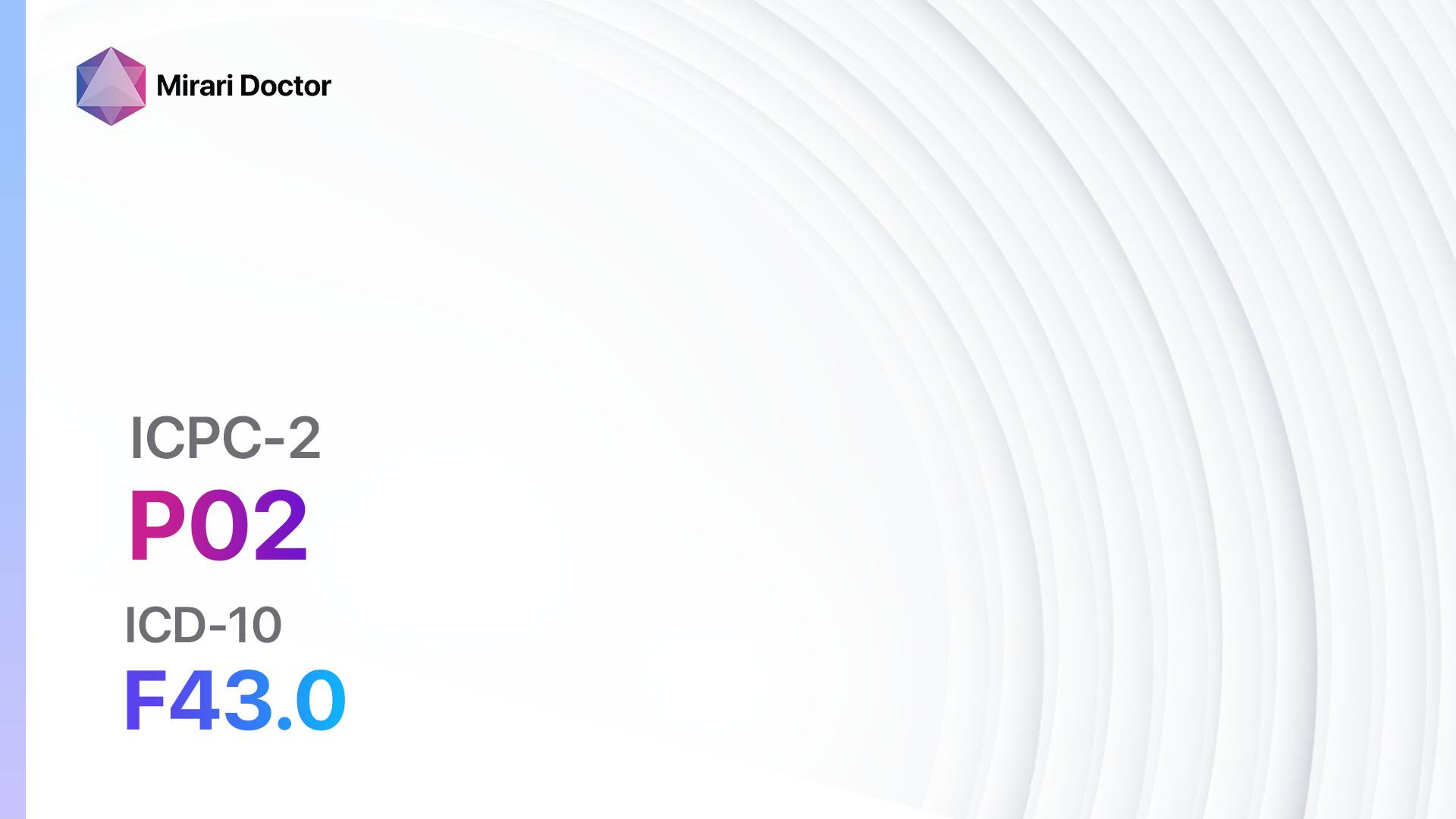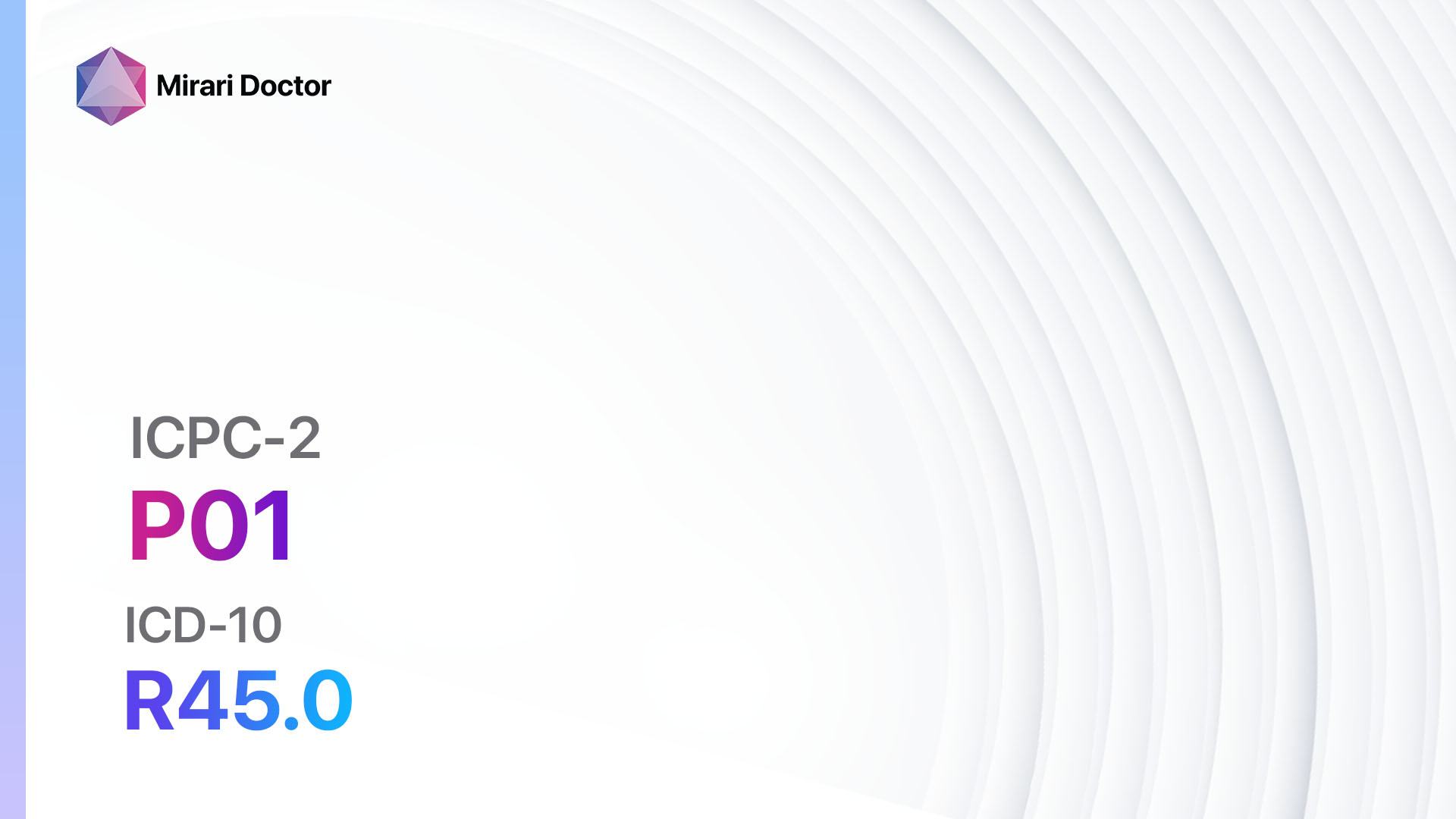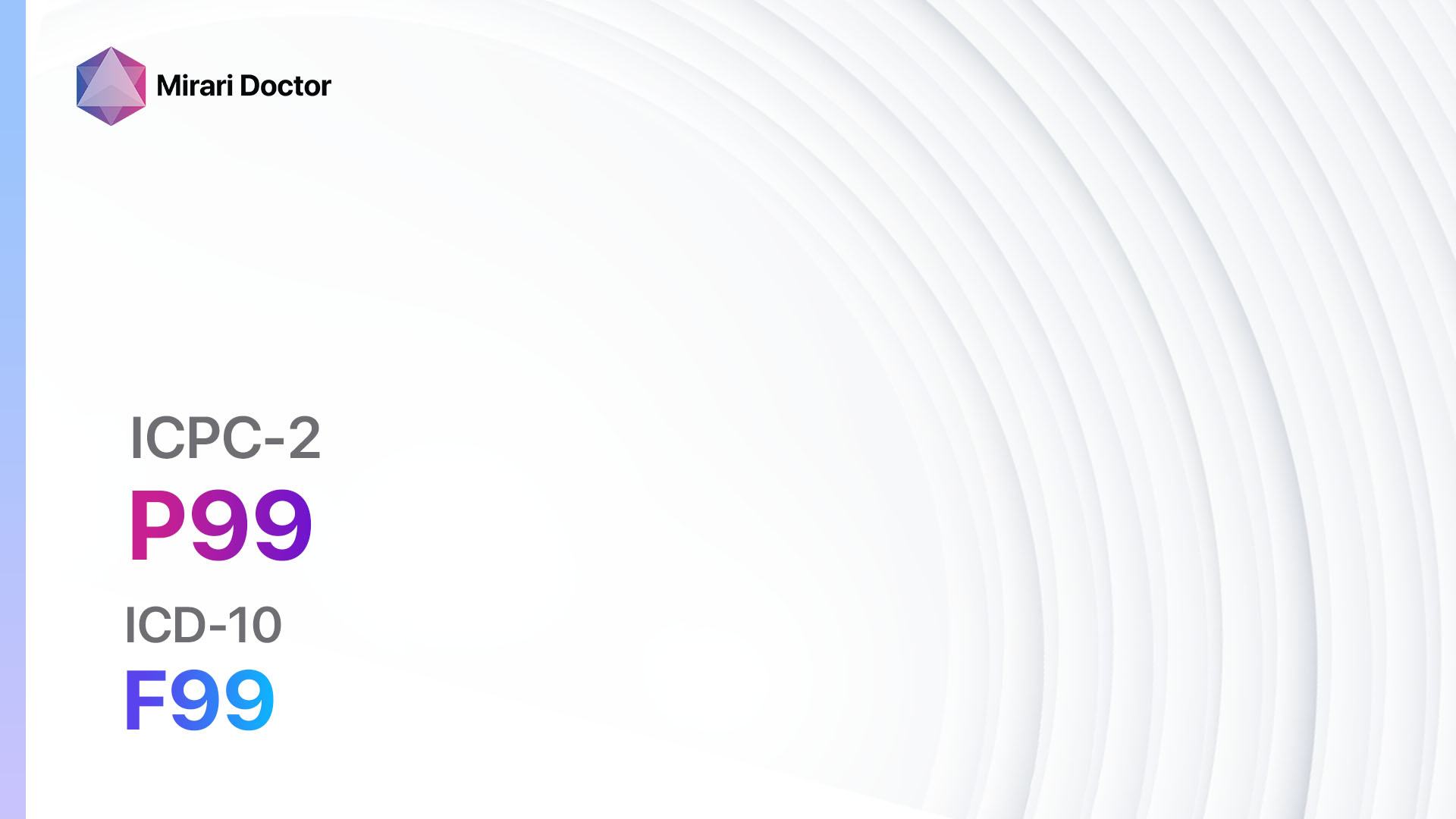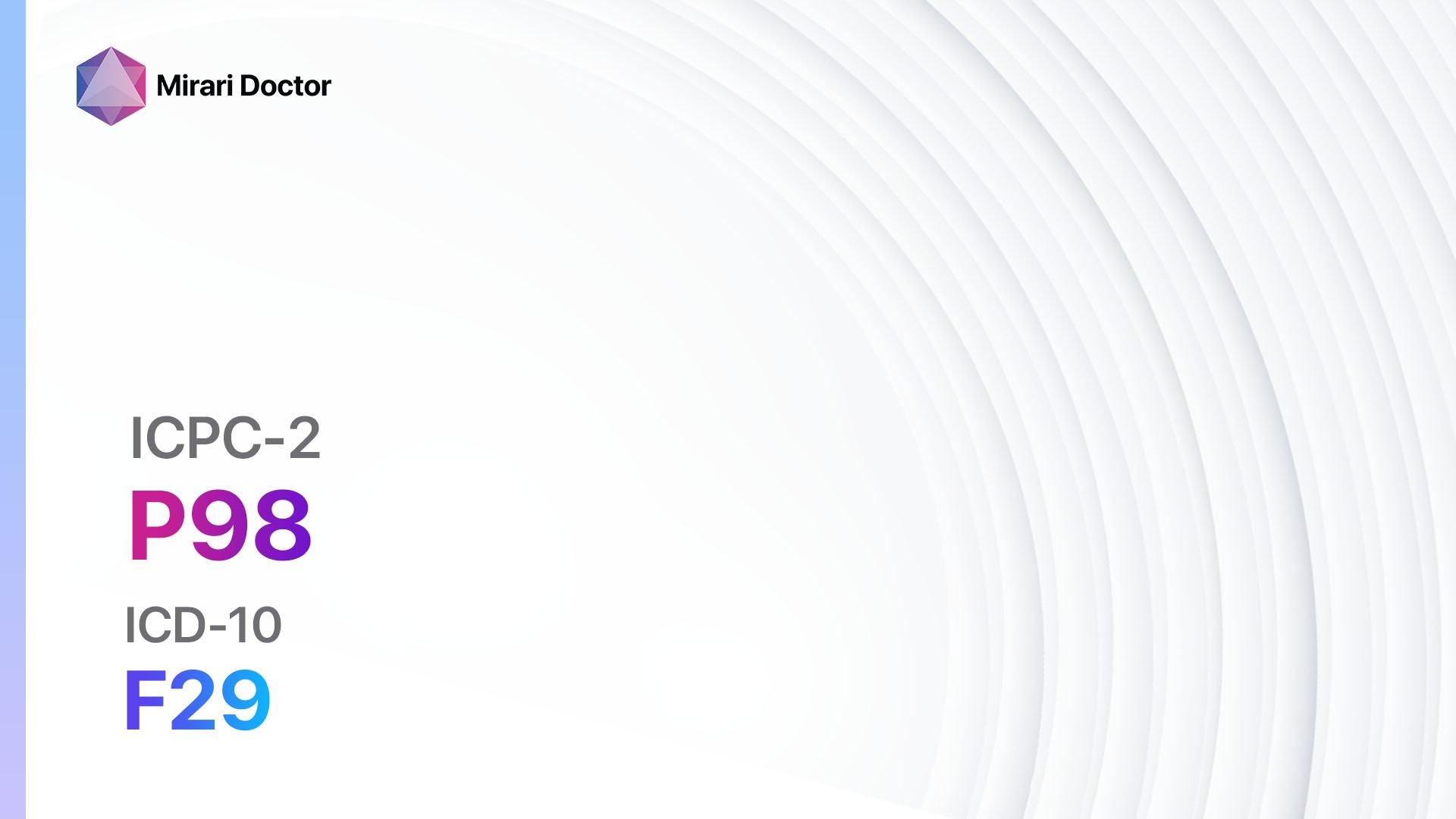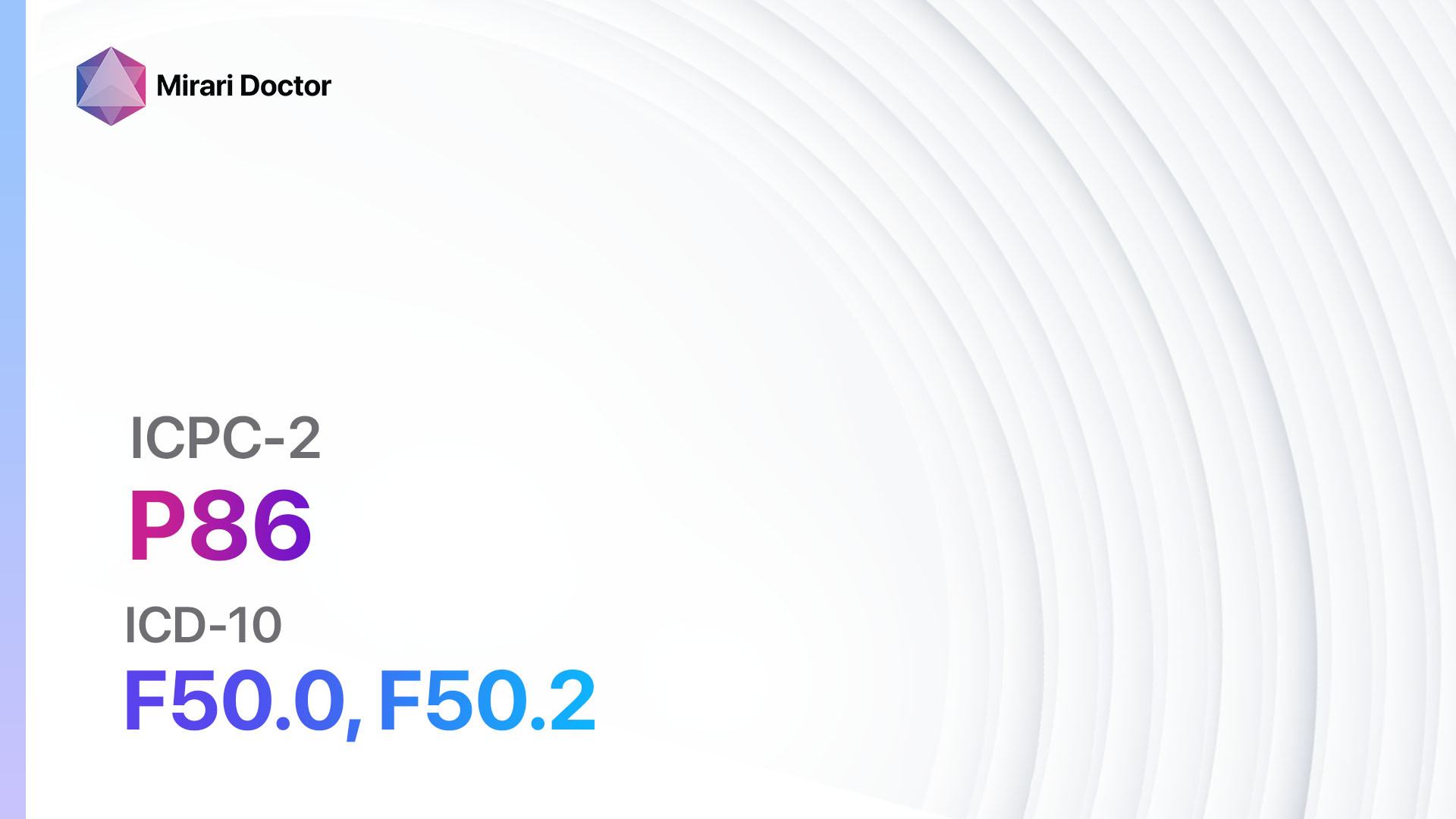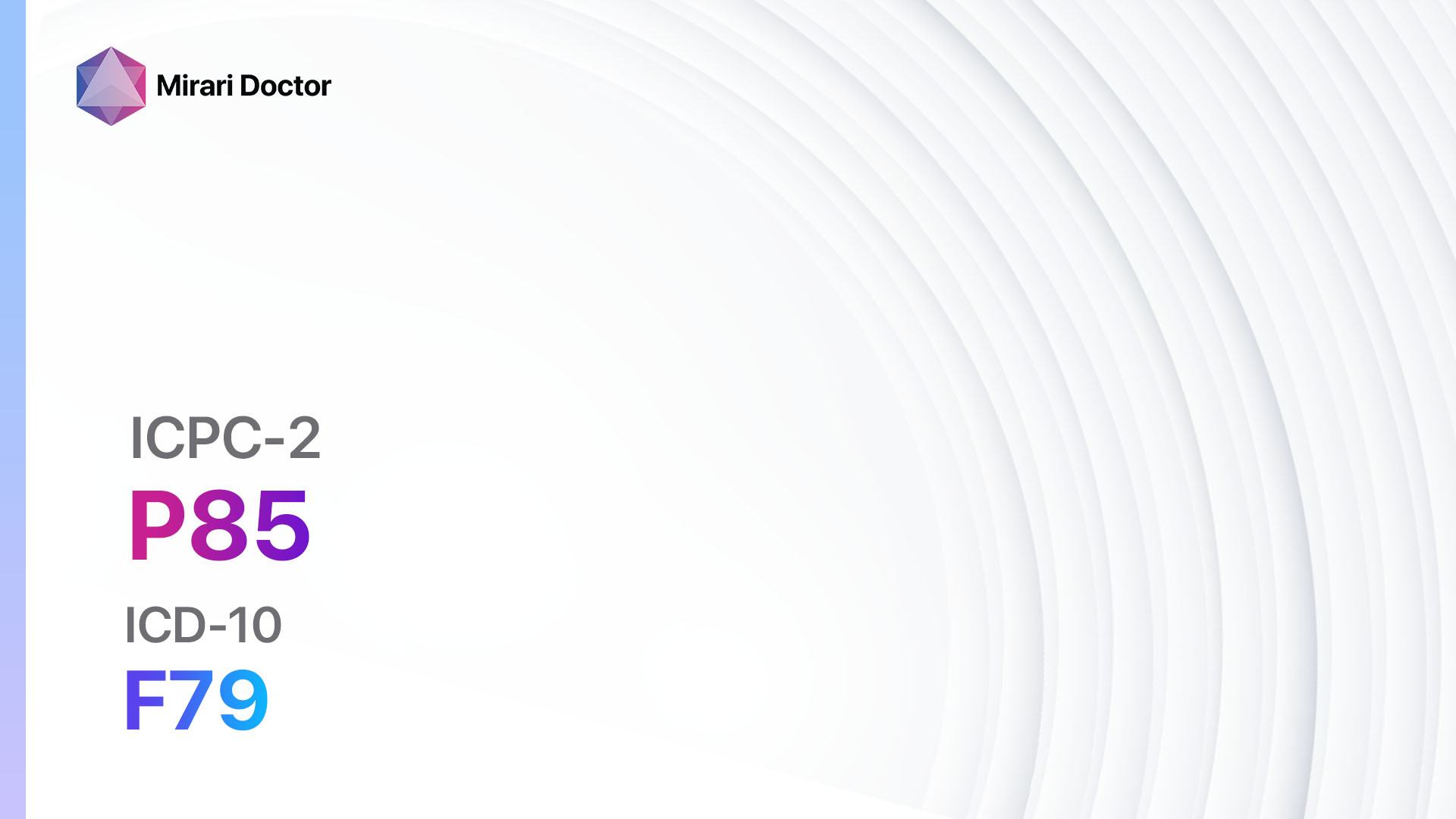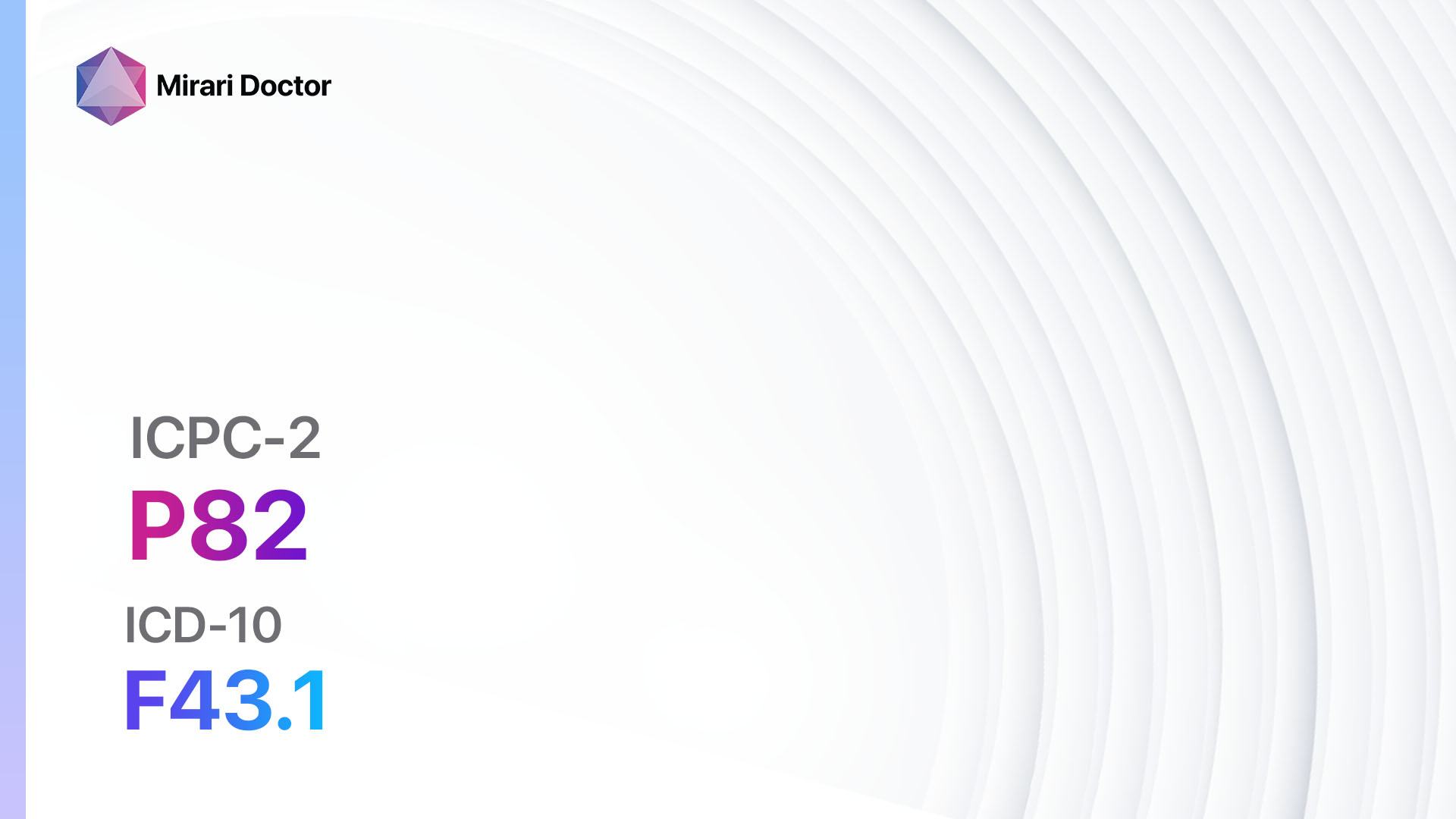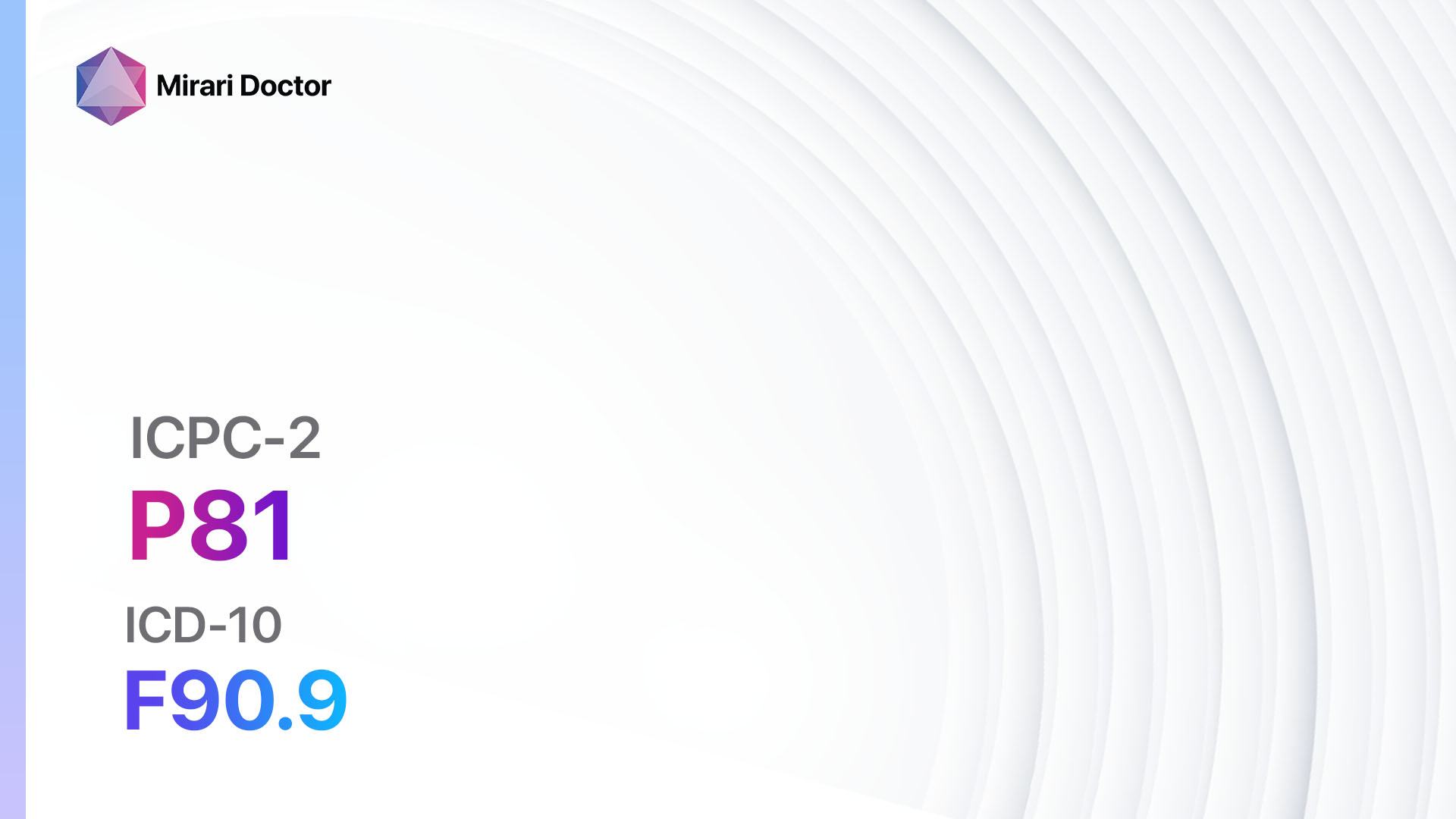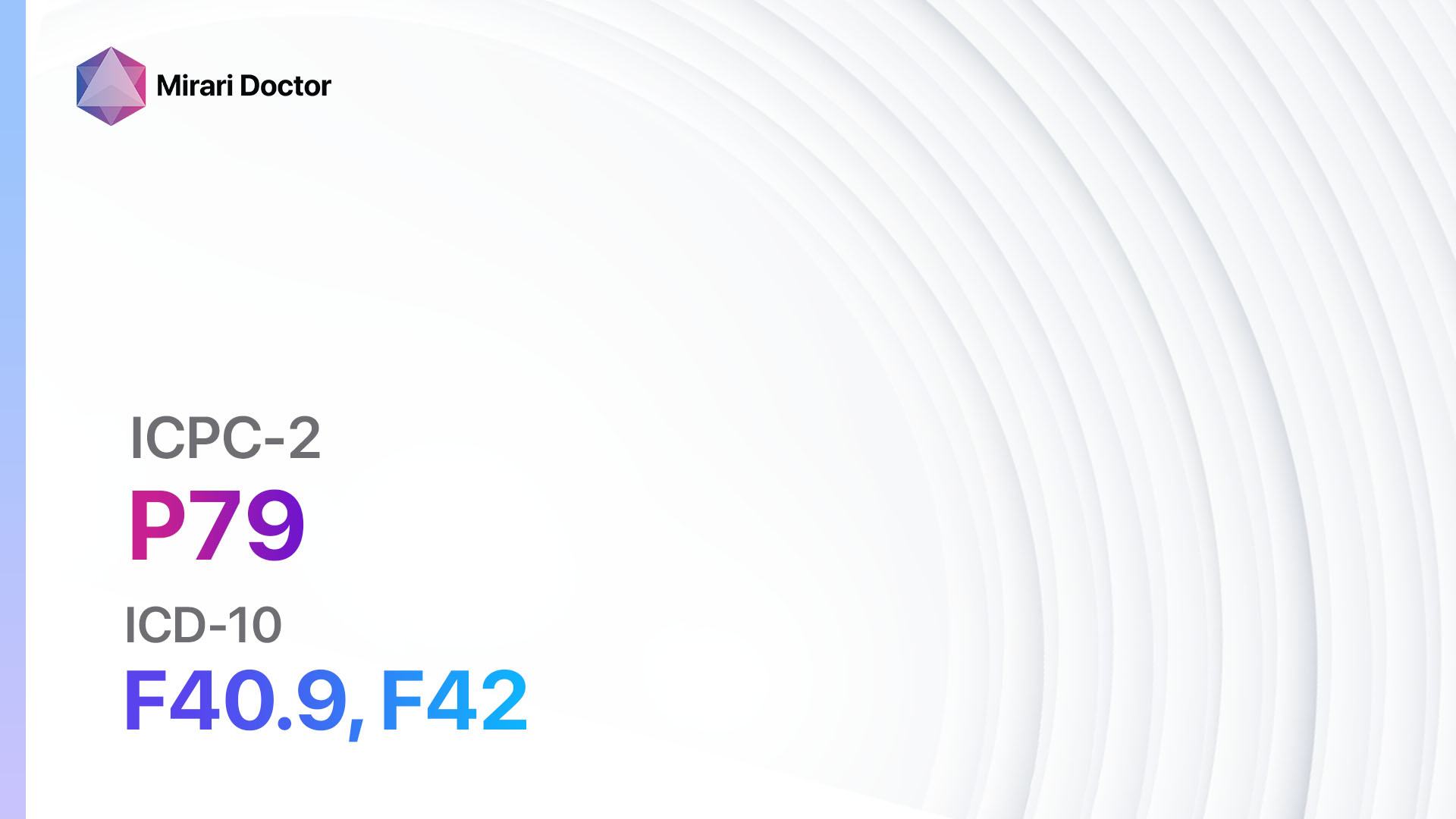
Introduction
Phobia/compulsive disorder is a mental health condition characterized by persistent and irrational fears or compulsive behaviors that significantly interfere with daily life[1]. This guide aims to provide healthcare professionals with a comprehensive understanding of the condition, its symptoms, causes, diagnostic steps, possible interventions, and patient education.
Codes
- ICPC-2 Code: P79 Phobia/compulsive disorder
- ICD-10 Code: F40.9 Phobic anxiety disorder, unspecified, F42 Obsessive-compulsive disorder
Symptoms
- Excessive and irrational fear of specific objects, situations, or activities[2]
- Avoidance of the feared object or situation[3]
- Intense anxiety or panic attacks when exposed to the feared object or situation[4]
- Compulsive behaviors or rituals performed to alleviate anxiety[5]
- Distress or impairment in social, occupational, or other important areas of functioning[6]
Causes
- Genetic factors: Phobia/compulsive disorder may have a genetic component, as it tends to run in families[7].
- Brain structure and function: Certain areas of the brain, such as the amygdala and prefrontal cortex, may play a role in the development of phobias and compulsive behaviors[8].
- Traumatic experiences: Phobias can develop as a result of a traumatic experience, such as a car accident or animal attack[9].
- Learned behavior: Phobias can also be learned through observation or conditioning[10].
Diagnostic Steps
Medical History
- Conduct a thorough medical history to gather information about the patient’s symptoms, their duration, and any triggering events.
- Inquire about any family history of phobias or compulsive disorders.
- Assess for any comorbid mental health conditions, such as anxiety or depression.
Physical Examination
- Perform a physical examination to rule out any underlying medical conditions that may be contributing to the symptoms.
- Pay attention to vital signs, general appearance, and any physical signs of anxiety or distress.
Laboratory Tests
- There are no specific laboratory tests to diagnose phobia/compulsive disorder.
- However, blood tests may be ordered to rule out any underlying medical conditions that may be causing or exacerbating the symptoms.
Diagnostic Imaging
- Diagnostic imaging is not typically used in the diagnosis of phobia/compulsive disorder.
Other Tests
- Psychological assessments, such as the Diagnostic and Statistical Manual of Mental Disorders (DSM-5) criteria, may be used to confirm the diagnosis and assess the severity of symptoms.
- Other specialized tests, such as neuroimaging or neuropsychological testing, may be considered in certain cases to further evaluate brain structure and function.
Follow-up and Patient Education
- Schedule regular follow-up appointments to monitor the patient’s progress and adjust treatment as needed.
- Provide patient education materials on phobia/compulsive disorder, including information about the condition, treatment options, and coping strategies.
- Encourage the patient to seek support from mental health professionals or support groups.
Possible Interventions
Traditional Interventions
Medications:
Top 5 drugs for Phobia/compulsive disorder:
- Selective serotonin reuptake inhibitors (SSRIs) (e.g., Fluoxetine, Sertraline, Paroxetine):
- Cost: Generic versions can be $3-$50/month.
- Contraindications: Hypersensitivity to SSRIs, concurrent use of monoamine oxidase inhibitors (MAOIs).
- Side effects: Nausea, headache, insomnia.
- Severe side effects: Serotonin syndrome, suicidal thoughts.
- Drug interactions: MAOIs, other serotonergic drugs.
- Warning: Close monitoring for suicidal ideation during initial treatment.
- Benzodiazepines (e.g., Alprazolam, Clonazepam, Diazepam):
- Cost: Generic versions can be $3-$50/month.
- Contraindications: Acute narrow-angle glaucoma, severe respiratory insufficiency.
- Side effects: Sedation, dizziness, impaired coordination.
- Severe side effects: Respiratory depression, dependence.
- Drug interactions: Alcohol, opioids.
- Warning: Potential for abuse and dependence.
- Beta-blockers (e.g., Propranolol, Atenolol):
- Cost: Generic versions can be $3-$30/month.
- Contraindications: Severe bradycardia, heart block.
- Side effects: Fatigue, dizziness, cold extremities.
- Severe side effects: Bronchospasm, heart failure exacerbation.
- Drug interactions: Calcium channel blockers, insulin.
- Warning: Should not be abruptly stopped.
- Antidepressants (e.g., Venlafaxine, Duloxetine, Amitriptyline):
- Cost: Generic versions can be $3-$50/month.
- Contraindications: Hypersensitivity to antidepressants, concurrent use of MAOIs.
- Side effects: Nausea, dry mouth, sexual dysfunction.
- Severe side effects: Serotonin syndrome, suicidal thoughts.
- Drug interactions: MAOIs, other serotonergic drugs.
- Warning: Close monitoring for suicidal ideation during initial treatment.
- Antipsychotics (e.g., Risperidone, Quetiapine, Olanzapine):
- Cost: Generic versions can be $3-$50/month.
- Contraindications: Hypersensitivity to antipsychotics, dementia-related psychosis.
- Side effects: Sedation, weight gain, extrapyramidal symptoms.
- Severe side effects: Neuroleptic malignant syndrome, tardive dyskinesia.
- Drug interactions: Other antipsychotics, drugs that prolong QT interval.
- Warning: Increased risk of mortality in elderly patients with dementia-related psychosis.
Alternative Drugs:
- Buspirone: An anxiolytic medication that may be used as an alternative to benzodiazepines.
- Gabapentin: An anticonvulsant medication that may help reduce anxiety symptoms.
- Pregabalin: Another anticonvulsant medication that may be effective in treating anxiety disorders.
- Tricyclic antidepressants: Older antidepressants that may be used when SSRIs are not effective.
Cognitive Behavioral Therapy (CBT):
- CBT is a type of psychotherapy that focuses on identifying and changing negative thought patterns and behaviors.
- It is considered the gold standard treatment for phobia/compulsive disorder.
- Cost: Varies depending on the therapist and location. Typically ranges from $100-$200 per session.
Exposure Therapy:
- Exposure therapy involves gradually exposing the patient to the feared object or situation in a controlled and safe manner.
- This helps the patient develop coping mechanisms and reduce anxiety.
- Cost: Varies depending on the therapist and location. Typically ranges from $100-$200 per session.
Support Groups:
- Support groups provide a safe and supportive environment for individuals with phobia/compulsive disorder to share their experiences and learn from others.
- They can offer emotional support, practical advice, and coping strategies.
- Cost: Varies depending on the group. Some support groups may be free, while others may charge a nominal fee.
Alternative Interventions
- Acupuncture: May help reduce anxiety and promote relaxation. Cost: $60-$120 per session.
- Yoga and Meditation: Can help reduce stress and promote overall well-being. Cost: Varies depending on the class or instructor. Typically ranges from $10-$20 per session.
- Herbal Supplements: Some herbal supplements, such as passionflower or valerian root, may have calming effects. Cost: Varies depending on the specific supplement.
- Massage Therapy: Can help reduce muscle tension and promote relaxation. Cost: $50-$100 per session.
- Art Therapy: Engaging in creative activities can help express emotions and reduce anxiety. Cost: Varies depending on the art therapist and location. Typically ranges from $50-$150 per session.
Lifestyle Interventions
- Regular Exercise: Physical activity can help reduce anxiety and improve overall mental well-being. Cost: Varies depending on the type of exercise. Can range from free (e.g., walking or jogging) to gym memberships or fitness classes.
- Healthy Diet: A balanced diet rich in fruits, vegetables, whole grains, and lean proteins can support overall mental health. Cost: Varies depending on food choices and dietary preferences.
- Stress Management Techniques: Learning and practicing stress management techniques, such as deep breathing exercises or mindfulness, can help reduce anxiety. Cost: Free or low-cost resources available online or through apps.
- Adequate Sleep: Getting enough sleep is essential for overall mental health and well-being. Cost: Varies depending on sleep hygiene practices and any necessary interventions for sleep disorders.
It is important to note that the cost ranges provided are approximate and may vary depending on the location and availability of the interventions.
Mirari Cold Plasma Alternative Intervention
Understanding Mirari Cold Plasma
- Safe and Non-Invasive Treatment: Mirari Cold Plasma is a safe and non-invasive treatment option for various skin conditions. It does not require incisions, minimizing the risk of scarring, bleeding, or tissue damage.
- Efficient Extraction of Foreign Bodies: Mirari Cold Plasma facilitates the removal of foreign bodies from the skin by degrading and dissociating organic matter, allowing easier access and extraction.
- Pain Reduction and Comfort: Mirari Cold Plasma has a local analgesic effect, providing pain relief during the treatment, making it more comfortable for the patient.
- Reduced Risk of Infection: Mirari Cold Plasma has antimicrobial properties, effectively killing bacteria and reducing the risk of infection.
- Accelerated Healing and Minimal Scarring: Mirari Cold Plasma stimulates wound healing and tissue regeneration, reducing healing time and minimizing the formation of scars.
Mirari Cold Plasma Prescription
Video instructions for using Mirari Cold Plasma Device – P79 Phobia/compulsive disorder (ICD-10:F40.9, F42)
| Mild | Moderate | Severe |
| Mode setting: 2 (Wound Healing) Location: 7 (Neuro system & ENT) Morning: 15 minutes, Evening: 15 minutes |
Mode setting: 2 (Wound Healing) Location: 7 (Neuro system & ENT) Morning: 30 minutes, Lunch: 30 minutes, Evening: 30 minutes |
Mode setting: 2 (Wound Healing) Location: 7 (Neuro system & ENT) Morning: 30 minutes, Lunch: 30 minutes, Evening: 30 minutes |
| Mode setting: 7 (Immunotherapy) Location: 1 (Sacrum) Morning: 15 minutes, Evening: 15 minutes |
Mode setting: 7 (Immunotherapy) Location: 1 (Sacrum) Morning: 30 minutes, Lunch: 30 minutes, Evening: 30 minutes |
Mode setting: 7 (Immunotherapy) Location: 1 (Sacrum) Morning: 30 minutes, Lunch: 30 minutes, Evening: 30 minutes |
| Total Morning: 30 minutes approx. $5 USD, Evening: 30 minutes approx. $5 USD |
Total Morning: 60 minutes approx. $10 USD, Lunch: 60 minutes approx. $10 USD, Evening: 60 minutes approx. $10 USD, |
Total Morning: 60 minutes approx. $10 USD, Lunch: 60 minutes approx. $10 USD, Evening: 60 minutes approx. $10 USD, |
| Usual treatment for 7-60 days approx. $70 USD – $600 USD | Usual treatment for 6-8 weeks approx. $1,260 USD – $1,680 USD |
Usual treatment for 3-6 months approx. $2,700 USD – $5,400 USD
|
 |
|
Use the Mirari Cold Plasma device to treat Phobia/compulsive disorder effectively.
WARNING: MIRARI COLD PLASMA IS DESIGNED FOR THE HUMAN BODY WITHOUT ANY ARTIFICIAL OR THIRD PARTY PRODUCTS. USE OF OTHER PRODUCTS IN COMBINATION WITH MIRARI COLD PLASMA MAY CAUSE UNPREDICTABLE EFFECTS, HARM OR INJURY. PLEASE CONSULT A MEDICAL PROFESSIONAL BEFORE COMBINING ANY OTHER PRODUCTS WITH USE OF MIRARI.
Step 1: Cleanse the Skin
- Start by cleaning the affected area of the skin with a gentle cleanser or mild soap and water. Gently pat the area dry with a clean towel.
Step 2: Prepare the Mirari Cold Plasma device
- Ensure that the Mirari Cold Plasma device is fully charged or has fresh batteries as per the manufacturer’s instructions. Make sure the device is clean and in good working condition.
- Switch on the Mirari device using the power button or by following the specific instructions provided with the device.
- Some Mirari devices may have adjustable settings for intensity or treatment duration. Follow the manufacturer’s instructions to select the appropriate settings based on your needs and the recommended guidelines.
Step 3: Apply the Device
- Place the Mirari device in direct contact with the affected area of the skin. Gently glide or hold the device over the skin surface, ensuring even coverage of the area experiencing.
- Slowly move the Mirari device in a circular motion or follow a specific pattern as indicated in the user manual. This helps ensure thorough treatment coverage.
Step 4: Monitor and Assess:
- Keep track of your progress and evaluate the effectiveness of the Mirari device in managing your Phobia/compulsive disorder. If you have any concerns or notice any adverse reactions, consult with your health care professional.
Note
This guide is for informational purposes only and should not replace the advice of a medical professional. Always consult with your healthcare provider or a qualified medical professional for personal advice, diagnosis, or treatment. Do not solely rely on the information presented here for decisions about your health. Use of this information is at your own risk. The authors of this guide, nor any associated entities or platforms, are not responsible for any potential adverse effects or outcomes based on the content.
Mirari Cold Plasma System Disclaimer
- Purpose: The Mirari Cold Plasma System is a Class 2 medical device designed for use by trained healthcare professionals. It is registered for use in Thailand and Vietnam. It is not intended for use outside of these locations.
- Informational Use: The content and information provided with the device are for educational and informational purposes only. They are not a substitute for professional medical advice or care.
- Variable Outcomes: While the device is approved for specific uses, individual outcomes can differ. We do not assert or guarantee specific medical outcomes.
- Consultation: Prior to utilizing the device or making decisions based on its content, it is essential to consult with a Certified Mirari Tele-Therapist and your medical healthcare provider regarding specific protocols.
- Liability: By using this device, users are acknowledging and accepting all potential risks. Neither the manufacturer nor the distributor will be held accountable for any adverse reactions, injuries, or damages stemming from its use.
- Geographical Availability: This device has received approval for designated purposes by the Thai and Vietnam FDA. As of now, outside of Thailand and Vietnam, the Mirari Cold Plasma System is not available for purchase or use.
References
- American Psychiatric Association. (2013). Diagnostic and statistical manual of mental disorders (5th ed.). https://doi.org/10.1176/appi.books.9780890425596
- Eaton, W. W., Bienvenu, O. J., & Miloyan, B. (2018). Specific phobias. The Lancet Psychiatry, 5(8), 678-686. https://doi.org/10.1016/S2215-0366(18)30169-X
- Krysta, K., Krzystanek, M., Cubała, W. J., & Gałuszko-Węgielnik, M. (2017). Phobias: A review of the literature. Psychiatria Danubina, 29(Suppl 3), 406-411.
- Bandelow, B., & Michaelis, S. (2015). Epidemiology of anxiety disorders in the 21st century. Dialogues in Clinical Neuroscience, 17(3), 327-335. https://doi.org/10.31887/DCNS.2015.17.3/bbandelow
- Hirschtritt, M. E., Bloch, M. H., & Mathews, C. A. (2017). Obsessive-compulsive disorder: Advances in diagnosis and treatment. JAMA, 317(13), 1358-1367. https://doi.org/10.1001/jama.2017.2200
- Stein, D. J., Costa, D. L. C., Lochner, C., Miguel, E. C., Reddy, Y. C. J., Shavitt, R. G., van den Heuvel, O. A., & Simpson, H. B. (2019). Obsessive-compulsive disorder. Nature Reviews Disease Primers, 5(1), 52. https://doi.org/10.1038/s41572-019-0102-3
- Pauls, D. L., Abramovitch, A., Rauch, S. L., & Geller, D. A. (2014). Obsessive-compulsive disorder: An integrative genetic and neurobiological perspective. Nature Reviews Neuroscience, 15(6), 410-424. https://doi.org/10.1038/nrn3746
- Milad, M. R., & Rauch, S. L. (2012). Obsessive-compulsive disorder: Beyond segregated cortico-striatal pathways. Trends in Cognitive Sciences, 16(1), 43-51. https://doi.org/10.1016/j.tics.2011.11.003
- Ollendick, T. H., & Muris, P. (2015). The scientific review of mental health practice: Objective investigations of controversial and unorthodox claims in clinical psychology, psychiatry, and social work. The Scientific Review of Mental Health Practice, 11(1), 4-19.
- Mineka, S., & Zinbarg, R. (2006). A contemporary learning theory perspective on the etiology of anxiety disorders: It’s not what you thought it was. American Psychologist, 61(1), 10-26. https://doi.org/10.1037/0003-066X.61.1.10
Related articles
Made in USA


